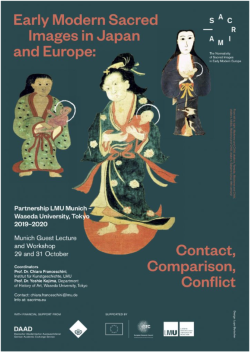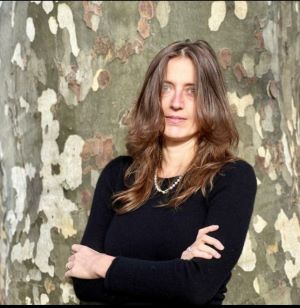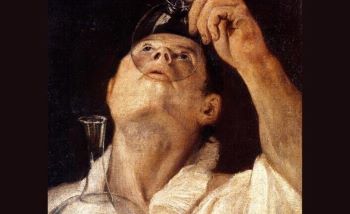Aufgabengebiet
Kunst, Kunsttheorien und Kunstgeografien im vormodernen Italien, Europa und Mittelmeerraum; Transkulturelle Begegnungen und Konflikte um und durch Bilder im Mittelmeerraum
Kunst und Architektur der sozialen und religiösen Räume der Vormoderne (Klöster, Spitäler, Kapellen, Kirchen, usw.)
Verhältnis Bilder/Texte und Bildsemantik
Status der Bilder im religiösen, rechtlichen und politischen Rahmen; Bilderfrage/Stilfrage in der Renaissance, Reformationszeit und in der Gegenreformation
Normativität und Autonomie der Kunst
Bildtheorie, Methoden, Geschichte der Kunstgeschichte (Photographie und Kunstgeschichte, Photo-archiven)
Leitung des ERC Projektes SACRIMA "The Normativity of Sacred Images in Early Modern Europe".
Kontakt
Zentnerstraße 31
80798 München
Raum:
508
Telefon:
+49 (0)89 / 2180 - 3501
E-Mail:
Chiara.Franceschini@kunstgeschichte.uni-muenchen.de
Sprechstunde:
nach Vereinbarung
Aktuelles
Capricci del Rinascimento – Journée d’étude en l’honneur de Philippe Morel
02 Octobre 2023
Lundi 2 octobre 2023
10h30 – 18h30
Événement gratuit – en français
→ JE RÉSERVE
Nous vous prions de bien vouloir annuler votre réservation si vous ne souhaitez plus y assister, afin de donner à d’autres personnes la possibilité de participer à l’événement.
Il sera possible de suivre cette rencontre sur Zoom : LIEN
Storia del limbo, Feltrinelli, Milan, 2017
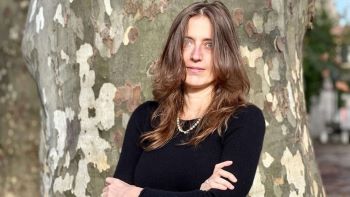
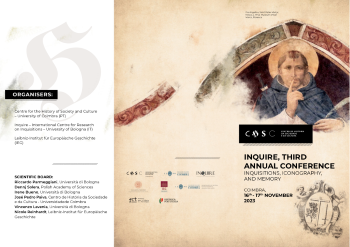
Ankündigung
Zum Abschluss ihres ERC-Projekts SACRIMA wird Prof. Dr. Chiara Franceschini im März 2023 eine Vortragsreihe zum Thema "Archipelagoes of Images: Kunst und Inquisition in der Frühen Neuzeit" an der EHESS in Paris halten, um ihre Arbeit zur Bildnormativität in der Kunst der Renaissance und der Frühen Neuzeit anhand einiger exemplarischer Fälle an der Schnittstelle von der Kunstgeschichte, der Materialität von religiösen Kultformen und der transkulturellen Geographie von Bildern im frühen Mittelmeerraum vorzustellen.
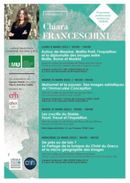
1. New Publication:
New Publication from the Sacrima Project now available in print and in OA:
Sacred Images and Normativity: Contested Forms in Early Modern Art, edited by Chiara Franceschini, Turnhout: Brepols, 2021
Early modern objects, images and artworks often served as nodes of discussion and contestation. If images were sometimes contested by external and often competing agencies (religious and secular authorities, image theoreticians, inquisitions, or single individuals), artists and objects were often just as likely to impose their own rules and standards through the continuation or contestation of established visual traditions, styles, iconographies, materialities, reproductions and reframings.
Centering on the capacity of the image as agent — either in actual legal processes or, more generally, in the creation of new visual standards — this volume provides a first exploration of image normativity by means of a series of case studies that focus in different ways on the intersections between the limits of the sacred image and the power of art between 1450 and 1650.
The fourteen contributors to this volume discuss the status of images and objects in trials; contested portraits, objects and iconographies; the limits to representations of suffering; the tensions between theology and art; and the significance of copies and adaptations that establish as well as contest visual norms from Europe and beyond.
The layout of the volume is an original design of the Studio Lupo Burtscher/Lungomare (Bozen) for the Sacrima Project.
Front-matter, the Introduction and three essays by members of the Sacrima Project are available in Open Access at the following links:
• Chiara Franceschini, “Images as Norms in Europe and Beyond: A Research Program”, pp. 12-27.
• Chiara Franceschini, “Too Many Wounds: Innocenzo da Petralia’s Excessive Crucifixes and the Normative Image”, pp. 46-67.
• Cloe Cavero de Carondelet, “Wounds on Trial: Forensic Truth, Sanctity, and the Early Modern Visual Culture of Ritual Murder”, pp. 68-85.
• Erin Giffin, “The Tradition of Change in Copies of the Santa Casa di Loreto: The Case of San Clemente in Venice”, pp. 108-203.
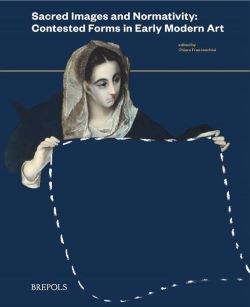
Chapels of the Cinquecento and Seicento in the Churches of Rome, edited by Chiara Franceschini, Steven F. Ostrow, and Patrizia Tosini, Milano: Officina Libraria, 2020
Nine studies of early modern private chapels as multimedia “laboratories” for social and devotional display and for artistic invention and innovation in 16th- and 17th-century Rome.
Roman church interiors throughout the Early Modern age were endowed with rich historical and visual significance. During the sixteenth and seventeenth centuries, in anticipation of and following the Council of Trent, and in response to the expansion of the Roman Curia, the chapel became a singular arena in which wealthy and powerful Roman families, as well as middle-class citizens, had the opportunity to demonstrate their status and role in Roman society. In most cases the chapels were conceived not as isolated spaces, but as part of a more complex system, which involved the nave and the other chapels within the church, in a dialogue among the arts and the patrons of those other spaces. This volume explores this historical and artistic phenomenon through nine examples involving the patronage of prominent Roman families such as the Frangipane, Spadas, Caetanis, Cybos and important artists and architects such as Federico Zuccari, Annibale Carracci, Giacomo della Porta, Francesco da Volterra, Carlo Maderno, Alessandro Algardi, Carlo Maratta.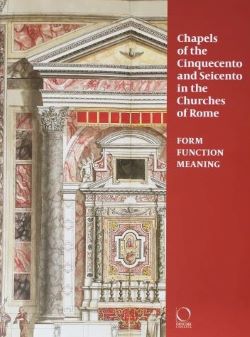
2. New Article:
"Mattia Preti’s Madonna della Lettera: Painting, Cult, and Inquisition in Malta, Messina, and Rome", in: Mitteilungen des Kunsthistorischen Institutes in Florenz, 61 (Heft III), 2019, pp. 335-365
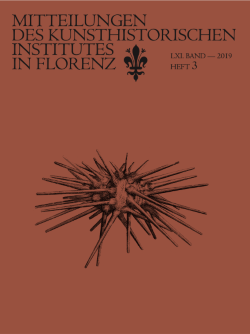
3. New Project:
Joint Project LMU-WASEDA: Early Modern Sacred Images in Japan and Europe: Contact, Comparison, Conflict (2019 - 2021)
Centered on sacred images traversing cultures, this DAAD and Waseda sponsored research project investigates the active role of objects and images as agents of religious encounter and conflict between early modern Europe and Japan. The two-year interactive initiative consists of two convening seminars held on the LMU and Waseda campuses respectively, and two subsequent guest lecture exchanges. Financially supported by the Deutscher Akademischer Austauschdienst (DAAD, the German Academic Exchange Service), this multi-year project brings together two autonomous research teams based in Germany (Munich) and in Japan (Tokyo) that are united by parallel research programs currently investigating the notion of sacred images in early modernity, specifically the ERC-funded SACRIMA Project and Professor Yoshie Kojima’s Reception and Transformation of Western Christian Art in Japan from the 16th to 19th Centuries. Each meeting aims to compare different art historical image theories and sets of visual norms that frame (and reframe) interpretations of Christianity, Shintoism and Buddhism in each community. By confronting Christian imagery in Japan and Europe from a cross-cultural point of view, this project pushes researchers to doubt and interrogate the early modern notion of the “sacred image” as well as current interpretative constructs such as “global art,” “interconnection” and “hybridity.”
The 2019 seminars consist of a series of collaborative workshops and teaching exchanges to enable interaction and comparative study. The first seminar between 28 October – 1 November 2019 is entitled Sacred Images in Early Modern Catholic Europe, and will take place on the LMU campus and consist of various site visits around Bavaria. The second seminar, Christian Images in Early Modern Japan over 18 – 23 November, will occur on the Waseda campus and include visits to Nara, Kyoto, and Osaka. Throughout the project’s duration, the LMU and Waseda Teams will independently develop lines of research to complicate and challenge standard art historical approaches and build towards successive meetings in Germany and Japan.
The two teaching exchanges scheduled for 2020 will increase teaching skills and expand undergraduate and graduate student awareness and comprehension of Christian images in Germany and Japan. In the first teaching exchange (Munich, July 2020) Prof. Kojima will teach three guest lectures in a course organized by Prof. Franceschini at LMU. In the second teaching exchange (Tokyo, November 2020) Prof. Franceschini will teach three guest lectures in a course organized by Prof. Kojima at Waseda. Each teaching exchange will include an intensive research workshop by the guest professor with the LMU and Waseda Teams to summarize, consolidate, and respond to the results of the intensive workshops from the year prior, and subsequent research over the intervening year. This teaching exchange is intended to further the conversation and encourage the next generation of scholars to engage with the agency of Catholic imagery.
